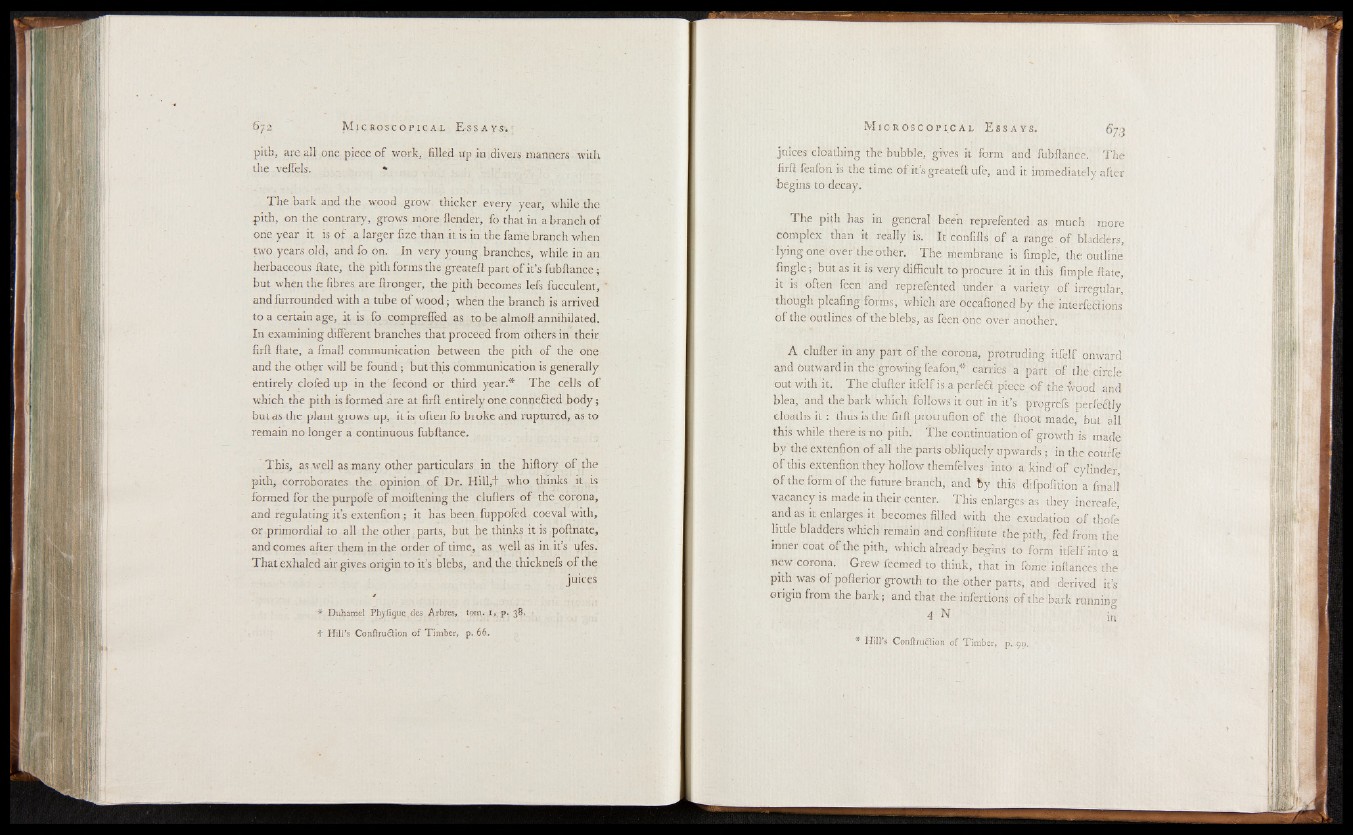
pith, are all one piece of work, filled up in divers manners with
die -veflels. - *
The bark and the wood grow thicker every year, while the
pith, on the contrary, grows more {lender, fo that in a branch of
one year it is of a larger fize than it is in the fame branch when
two years old, and fo on. In very young branches, while in an
herbaceous ftate, the pith forms the greatefl part of it’s fubftance;
but when the fibres are ftronger, the pith becomes lefs fucculent,
andfurrounded with a tube o f wood; when the branch is arrived
to a certain age, it is fo compreffed as to be almoft annihilated.
In examining different branches that proceed from others in their
firft ftate, a fmall communication between the pith of the one
and the other will be found ; but this communication is generally
entirely clofed up in the fecond or third year.* The cells o f
which the pith is formed are at firft entirely one connefted body;
but as the plant grows up, it is often fo broke and ruptured, as to
remain no longer a continuous fubftance.
This, as well as many other particulars in the hiftory o f the
pith, corroborates the opinion of Dr. Hill,+ who thinks it is
formed for the purpofe of moiftening the clufters o f the corona,
and regulating it’s extenfion ; it has been.fuppofed coeval with,
or primordial to all the other parts, but he thinks it is poftnate,
and comes after them in the order of time, as well as in it’s ufes.
That exhaled air gives origin to it’s blebs, and the thicknefs of the
juices
* Duhamel Phyficpie.des A.rbres, tom. i , p. 38,
juices cloathing the bubble, gives it form and fubftance.' The
firft feafon is the time of it’s greatefl; ufe, and it immediately after
begins to decay.
The pith has in general been reprefented as much more
complex than it really is. It confifts o f a rangé o f bladders,
lying one over’the other. The membrane is fimple, the outline
fingle ; but as it is very difficult to procure it in this fimple ftate,
it is often feen and reprefented under a variety o f irregular,
though pleafing forms, which are occafioned by the interfeftions
o f the outlines of the blebs, as feen one over another.
A duller in any part o f the corona, protruding itfelf onward
and outward in the growing feafon,* carries a part o f the circle
out with it. The clufter itfelf is a perfeft piece o f the wood and
blea, and the bark which follows it out in it’s progrefs perlefily
cloaths it : thus is the firft protrufion of the ffioot made, but all
this while there is no pith. The continuation o f growth is made
by the extenfion of all the parts obliquely upwards ; in the courfe
of this extenfion they hollow themfelves into- a kind o f cylinder,
of the form o f the future branch, and by this difpofition a fmall
vacancy is made in their center. This enlarges-as they increale,
and as it enlarges it becomes filled with the exudation of thofe'
little bladders which remain and conftitute the pith, .fed from the
inner coat of the pith, which already begins to form itfelf into a
new corona. Grew feemed to think, that in fome inftances the
pith was of pofterior growth to the other parts, and derived it’s
origin from the bark ; and that the infertions of the bark running
4 N in